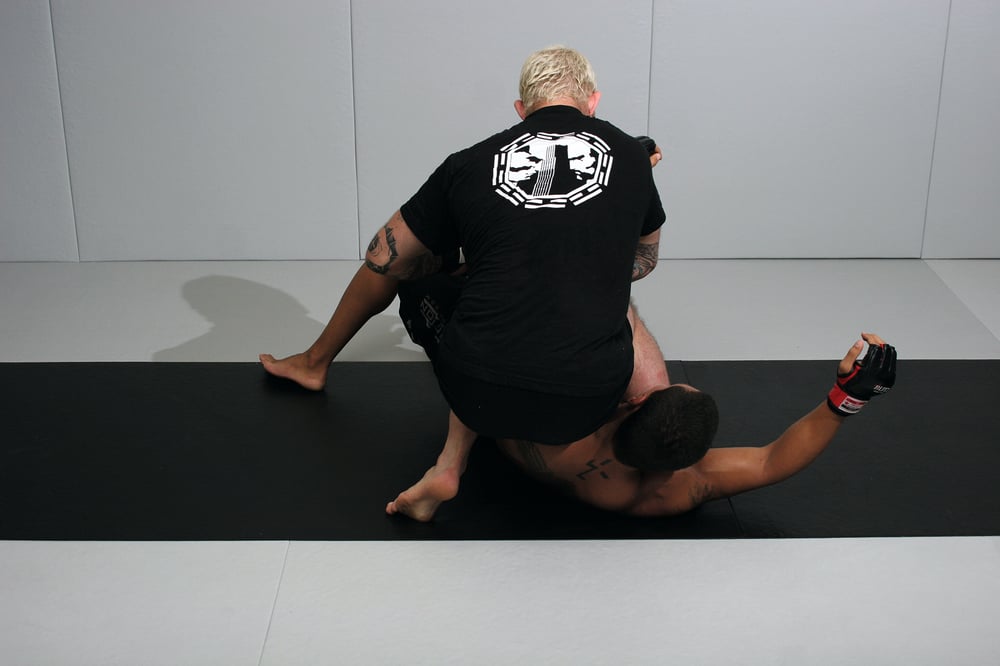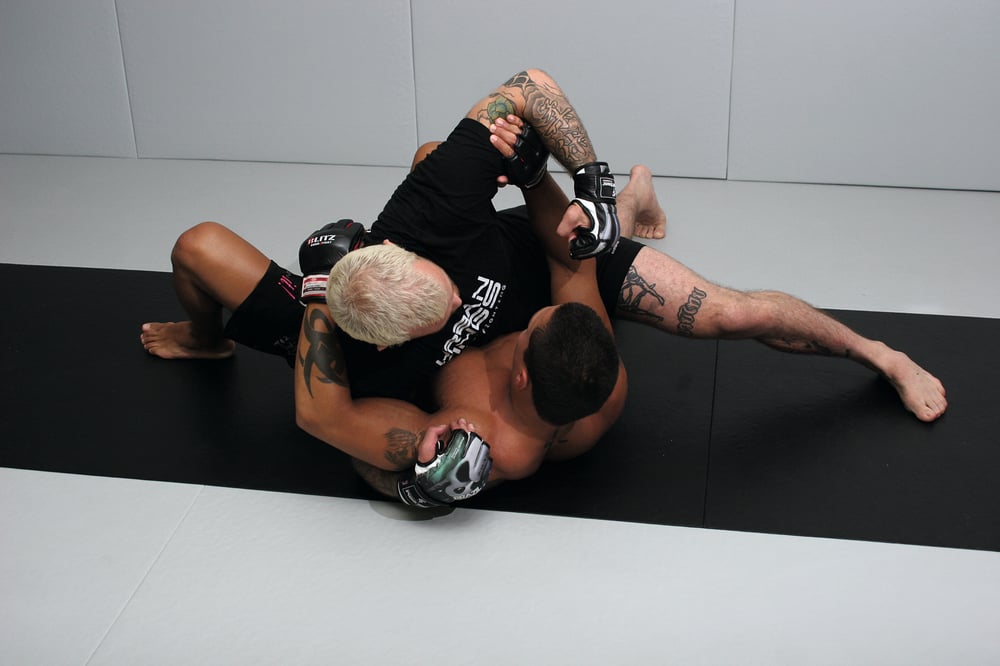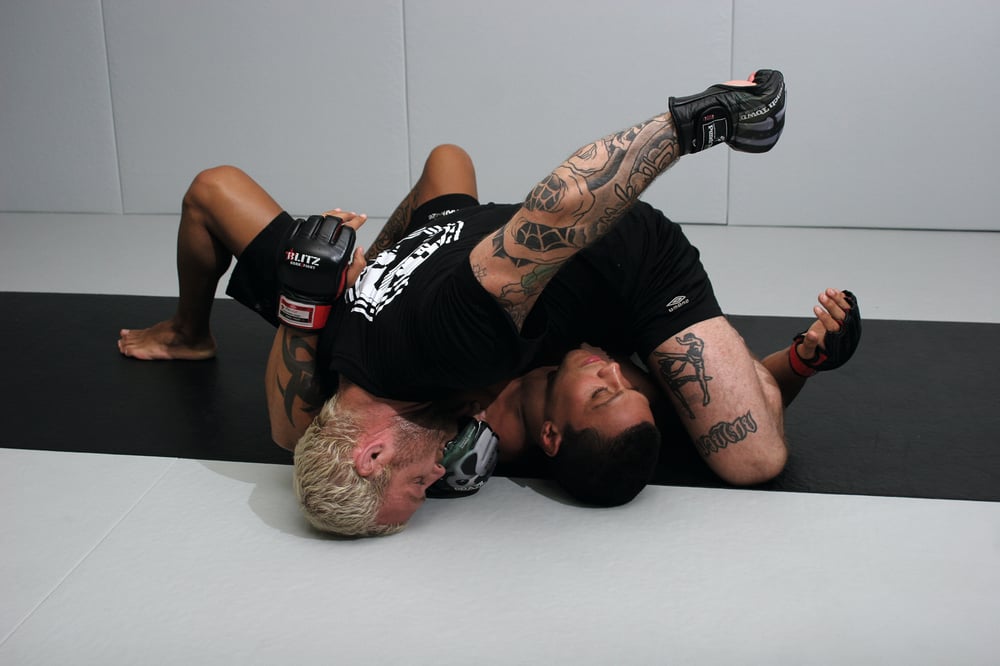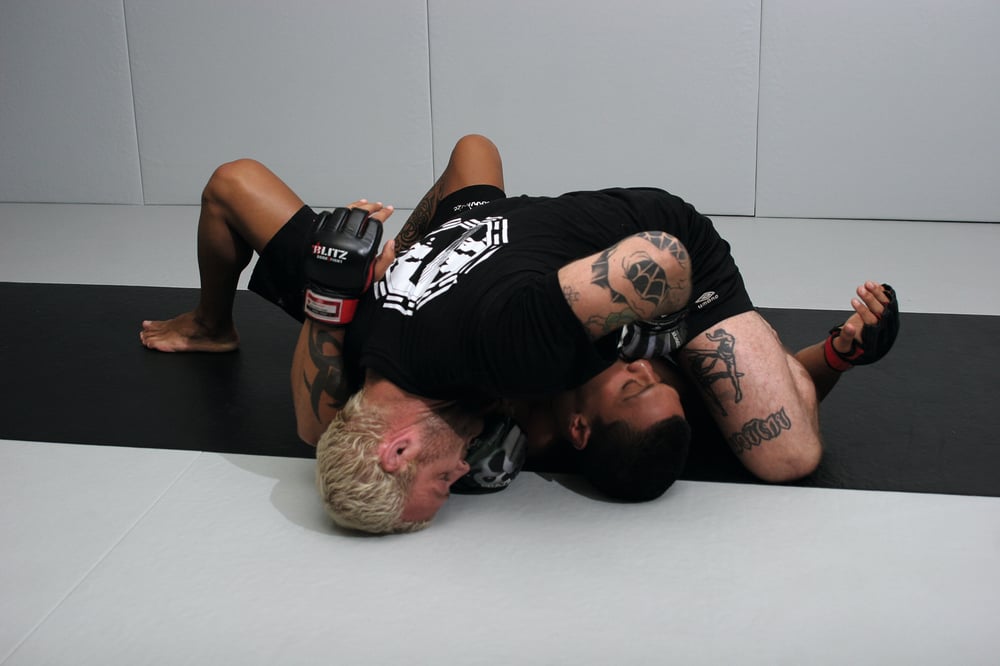
Issue 069
January 2011
Peter Irving is a professional welterweight fighter and Fighters Only’s resident fight expert for the last three years. Irving has fought in Europe and the USA and coaches fighters in London.

An extremely dominant position, side control nonetheless offers a great deal of opportunities for the bottom man to escape to his feet, reverse to a dominant position or regain guard. Capitalizing on your opponent’s efforts to escape or defend your attacks is the key to opening up avenues of attack and earning the finish by submission or ground ‘n’ pound.
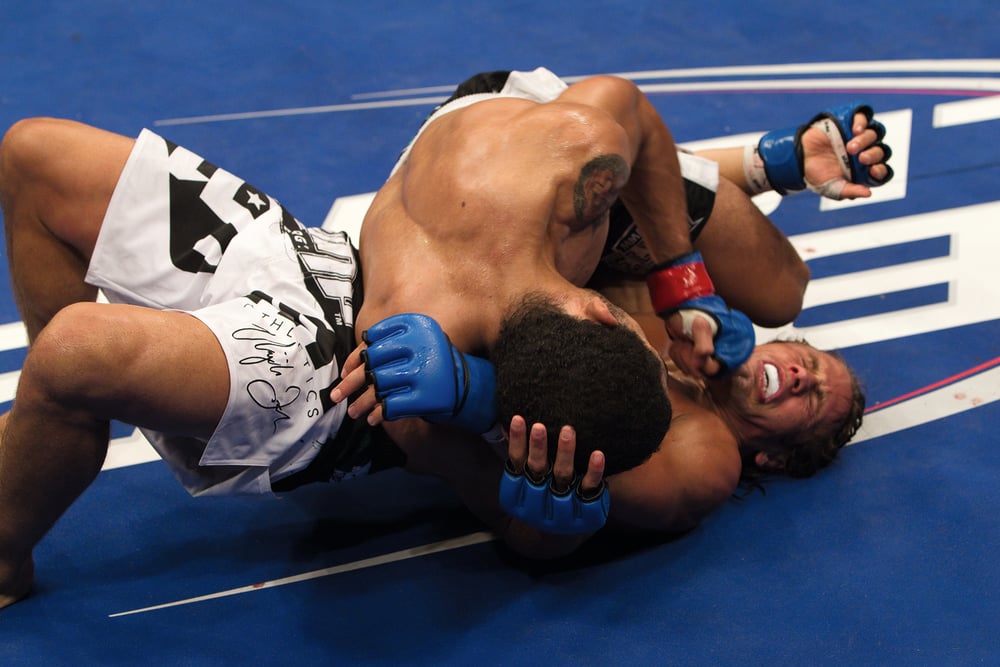
3 MINUTE CLINIC
Weight distribution
Center to center, or sternum to sternum, is a good guideline for your body placement. If you are too far over you will run the risk of being bridged, too shallow and your opponent will be able to escape their hips away from you. Remember that you want your opponent to be carrying your weight, not the mat. The more of your body in contact with the mat, the less weight you can apply on your opponent.
The underhook
A far-side underhook is necessary to maintain a good pin. If you are unable to underhook the far arm, you must underhook the leg or rotate to pin the other side of the body.
Leg position
There are several ways to pin in side control: on the toes with both legs outstretched; one leg out and one knee up blocking the hip; both knees up. All the different leg and hand positions offer different advantages for setting up different attacks, either submission or ground ‘n’ pound. Master them all for a versatile offense.
Head position
Keep your head tucked in tight against the shoulder to prevent your opponent from pushing your face away and regaining his underhook.
Step-over armbar from side control
This classic armlock set-up from judo and Brazilian jiu-jitsu takes advantage of the bottom man’s instinct to get an underhook and move to his side, facing the top man. By rapidly changing the side of your body that you’re attacking from you can outmaneuver your opponent.
1 Pete (black shirt) has Mikey in side control, using a far-side underhook and gripping his hands together in a gable grip. Pete uses the grip to drive his shoulder against Mikey’s jaw, turning his neck away and subsequently limiting Mikey’s hip movement.
2 Mikey starts to create space and gets his underhook.
3 Pete pops up to a knee ride, pulling Mikey’s neck in and controlling the elbow on the far side.
4 Pete slides left leg all the way around Mikey’s body and pinches his knees together over Mikey’s chest, isolating the arm.
5 Pete sits down, squeezing his knees and pulling his heels in toward his butt.
6 Pete lies back, bringing the arm with him, and with both hands controlling Mikey’s wrist he hyperextends Mikey’s elbow to get the tap.
Ground ‘n’ pound from side control
Because it’s normally necessary to commit both of your arms to controlling your opponent's arms when pinning in side-control, it can sometimes be difficult to get a clear shot to your foe’s head. By using a knee trap variation you can exert control with a leg instead of an arm, freeing up a hand to punch with and clearing the opponent’s lines of defense. See Matt Hughes’ destruction of BJ Penn for a great example of how effective this position can be.
1 Pete has Mikey in side control. He still uses a far-side underhook, but this time he’s not committing his hand beneath Mike’s head. Instead he keeps one hand free to strike, pulling up on his overhook to prevent Mikey placing his shoulder to the mat and getting onto his side.
2 Pete starts to punch down with his left hand, but Mikey blocks the bicep to jam his punch.
3 Pete draws Mikey’s arm away from his body and slides his knee over the elbow.
4 Pete posts his knee down, trapping Mikey’s arm, and posts his head on the mat to prevent Mikey from bridging him off.
5 Pete raises his striking arm high to maximize the power of the punch with greater shoulder movement.
6 Pete drops the punches on to Mikey’s unprotected face.





